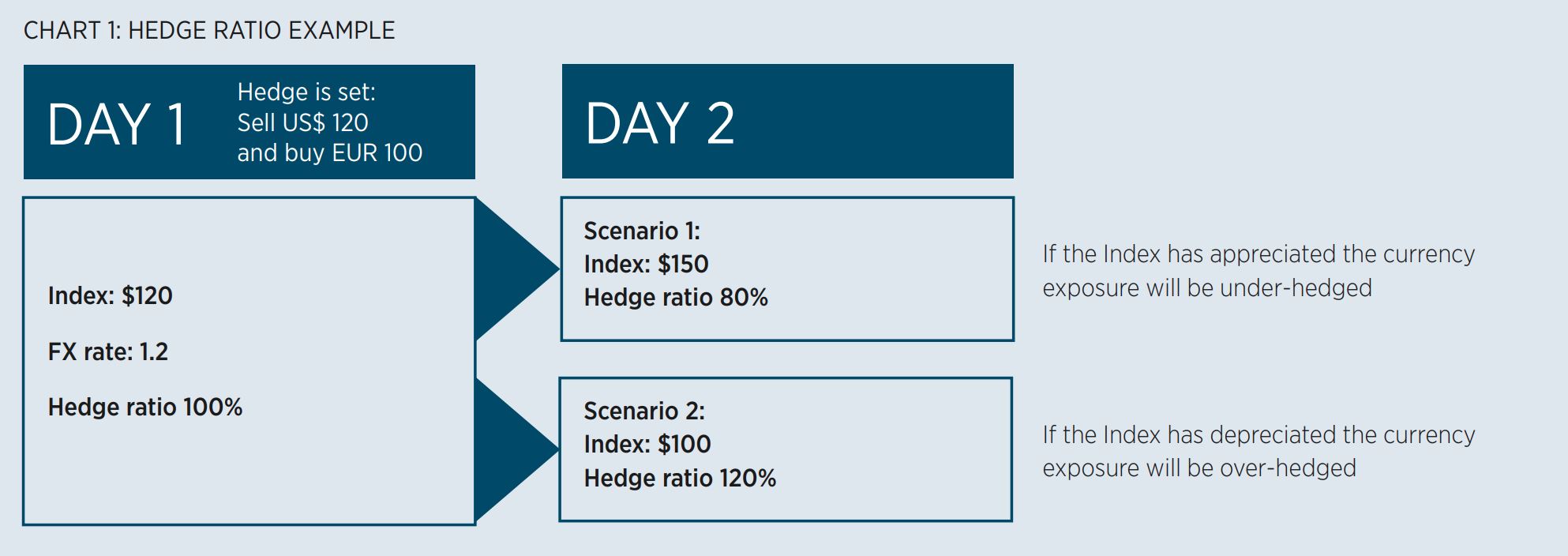For professional clients and qualified investors only Capital at risk. The value of investments and the income from them can fall as well as rise and are not guaranteed. Investors may not get back the amount originally invested.
Investors that buy bonds right across the world know this is a good way to put their eggs in more than one basket. Wide geographical diversification may be safer than investing only in one’s home country, which may be buffeted by its own unique shocks. The same applies even for investors diversifying across the eurozone.
However, diversification brings its own risk: the often forgotten one-off currency movements, which can badly hit investment returns and ramp-up risk. Consider a bond denominated in a currency whose central bank cuts interest rates.
This pushes down the bond’s yield, raising the bond’s value. However, this gain can be more than wiped out if the interest rate also pushes down the currency’s value sharply.
Hedging this risk through derivatives can reduce it. The philosophy is simple: to mitigate the impact of any currency movements on the underlying investment return, so that investors’ returns are based on the performance of the underlying asset. Funds can use various kinds of derivatives contract, such as a forward – an agreement to buy or sell a currency in the future, at a price fixed now.
At BlackRock, we offer fixed income iShares exchange-traded funds (ETFs), in a variety of currencies, which aim to hedge as much currency risk as they can. For investors worried about currency risk, an ETF removes the headache of going it alone and having to grapple with the complexity of hedging various bonds.

But how to do it?
A hedge usually starts off as perfect. When fund managers set it up, they usually hedge the value of the entire currency exposure, but no more: a ‘hedge ratio’ of one.
However, market movements continuously introduce imperfections. Imagine a fund whose entire portfolio is hedged against currency movements. The value of the fund’s portfolio might rise as bond yields fall, leaving part of the portfolio’s value unhedged. It might do the opposite, leaving the hedging position too large.
The other important number is the investment ratio: the proportion of the fund’s value that is invested in the underlying assets. In this case, it is the change in the value of the currency that introduces imperfection.
For example, this might leave the fund with a profit on its hedge. At this point the fund’s value, after taking account of this gain, is greater than the value of the underlying assets. The more that hedge ratios and investment ratios career off course, the greater the ‘tracking error’: when the fund’s return differs from the underlying market’s return. One solution is ‘static hedging’: the fund manager adjusts the hedge at times set down in the rules, without any deviation.
Give us today our daily hedge
This could be daily, to bring the hedge ratio back to one every day. However, this is expensive, because of the trading costs. A common alternative – once a month – is cheaper but creates a wider gulf between the fund’s return and the market return. Even if the hedge ratio is rejigged to one each day, the investment ratio is usually reset only once a month – running the risk of making this gulf still wider.
BlackRock follows a different approach for its iShares fixed income ETFs: ‘dynamic hedging’. We set thresholds for both the hedge and the investment ratio and monitor them daily. We adjust hedges to bring them back to one only if a threshold is breached.
We appreciate that hedging can be hard to understand, so you might prefer just to consider the outcome of dynamic hedging rather than the process. It combines the benefits of monthly and daily static hedging: transaction costs are lower than for the daily version, but any veer far off course is corrected more rapidly than for the monthly variety.
Avoiding sleepless nights
In other words, investors can sleep soundly, in the knowledge that the fund’s return sticks closely to the underlying market – but at low cost. To conclude, casting one’s investing net wide makes sense for bonds – but many investors just want to invest in bonds, rather than speculating in currencies too. With a well-managed index ETF that employs dynamic hedging, they can massively shrink currency risk.
Risk warnings
Capital at risk. The value of investments and the income from them can fall as well as rise and are not guaranteed. Investors may not get back the amount originally invested. Past performance is not a reliable indicator of current or future results and should not be the sole factor of consideration when selecting a product or strategy.
Changes in the rates of exchange between currencies may cause the value of investments to diminish or increase. Fluctuation may be particularly marked in the case of a higher volatility fund and the value of an investment may fall suddenly and substantially. Levels and basis of taxation may change from time to time.
Important information
This material is for distribution to Professional Clients (as defined by the Financial Conduct Authority or MiFID Rules) only and should not be relied upon by any other persons. In the European Economic Area (EEA): this is Issued by BlackRock (Netherlands) B.V. is authorised and regulated by the Netherlands Authority for the Financial Markets. Registered office Amstelplein 1, 1096 HA, Amsterdam, Tel: 020 549 5200, Tel: 31-20-549-5200. Trade Register No. 17068311
For your protection telephone calls are usually recorded. In the UK and Non-European Economic Area (EEA) countries: this is Issued by BlackRock Advisors (UK) Limited, which is authorised and regulated by the Financial Conduct Authority. Registered office: 12 Throgmorton Avenue, London, EC2N 2DL, Tel: +44 (0)20 7743 3000. Registered in England and Wales No. 00796793. For your protection, calls are usually recorded. Please refer to the Financial Conduct Authority website for a list of authorised activities conducted by BlackRock.
For investors in Switzerland
This document is marketing material. Until 31 December 2021, this document shall be exclusively made available to, and directed at, qualified investors as defined in the Swiss Collective Investment Schemes Act of 23 June 2006 (“CISA”), as amended. From 1 January 2022, this document shall be exclusively made available to, and directed at, qualified investors as defined in Article 10 (3) of the CISA of 23 June 2006, as amended, at the exclusion of qualified investors with an opting-out pursuant to Art. 5 (1) of the Swiss Federal Act on Financial Services (“FinSA”). For information on art. 8 / 9 Financial Services Act (FinSA) and on your client segmentation under art. 4 FinSA, please see the following website: www. blackrock.com/finsa. © 2021 BlackRock, Inc. All Rights Reserved. 1830815.



